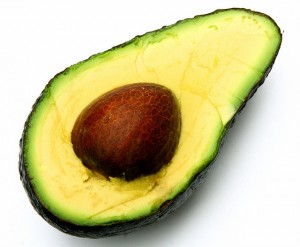 The ripeness of an avocado can usually be judged fairly accurately by the color of its skin. I say “usually” because sometimes the color does not give you an accurate reading. So it is therefore generally best to judge its ripeness by touch rather than visually.
The ripeness of an avocado can usually be judged fairly accurately by the color of its skin. I say “usually” because sometimes the color does not give you an accurate reading. So it is therefore generally best to judge its ripeness by touch rather than visually.
But that isn’t the topic of this post–so back on point. Generally, ripe avocado has a blackish-green color that is fairly uniform all the way around the circumference of the fruit. It is not uncommon for different sections of the fruit to ripen faster than other parts, and you must wait for the entire fruit to ripen for best results.
Keep in mind, that I’m referring to the Haas avocado, which is the most popular and prevalent cultivar in the United States. Over 80 percent of the avocados sold in stores are of this kind. There are many different types of avocado and their coloration will vary.
An unripe avocado is forest-green colored, and a gradually darkens as it ripens. It turns from brown to black, but you will be able to see a greenish hue which will be stronger in certain parts of the skin. That is normal.
Usually when the avocado turns dark green to black it is ripe and ready to eat. But you should always double-check it by feeling it with your fingertips. The flesh should be soft and mushy to the touch with no lumpy hard spots anywhere. This lets you know that it is soft and creamy and ready for eating.
Tip: Sometimes avocados which have been refrigerated during transport or storage, which applies to the majority of them that you will find in supermarkets, never ripen properly after being removed from refrigeration. The color may never change from green on the outside, but on the inside the fruit will rot without ever becoming edible. This happens on a small percentage of fruit only, but I wanted to mention it in case you run into it.
Image: ripe avocado by liz west
For the Avocado Aficionado
 |  |  |
|
| Avocado Slicer and Pitter | Avocado Saver | Avocado Oil | Authentic Guacamole Bowl |

Leave a Comment